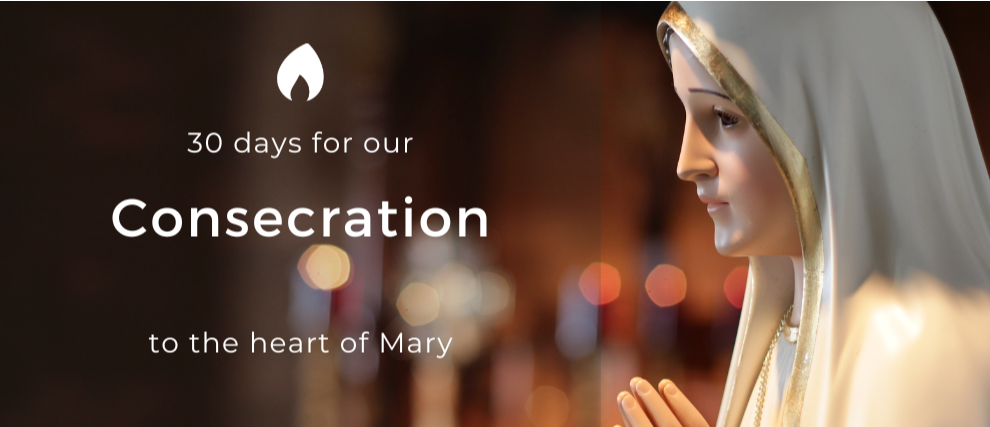Assumption of the The Virgin Mary: Meaning, Celebration, Hymns and Prayers
The Dormition has its roots in Eastern traditions dating back to the 5th and 6th centuries. In the 6th century, the Byzantine emperor Maurice instituted the feast of the Dormition of the Virgin Mary on August 15. In the West, this Marian feast took the name of Assumption in the 8th century, before being proclaimed as a dogma in 1950.
Discover what the feast of the Dormition of Mary is for the Orthodox, and what differentiates this great Marian feast from the celebration of the Assumption !
as we pray this novena in honor of Our Blessed Mother under the title of the Queenship of the Blessed Virgin Mary
What is the Dormition of the Virgin?
What does the term “Dormition” mean?
The term “Dormition” comes from the Latin dormitio which means “eternal sleep, death”. It designates a peaceful and serene death, like falling asleep. It is most frequently attributed to the Virgin Mary, although it can also be applied to saints.
Thus, for Orthodox Christians, this term Dormition of Mary is used to commemorate the gentle death of the Virgin, as well as her resurrection and glorification in heaven as Mother of God.
This commemoration is celebrated on August 15 and is one of the twelve feasts of the Orthodox Church. It closes the liturgical calendar, which begins with the feast of the Nativity of the Virgin. This Marian feast is very close to the feast of the Assumption, celebrated on the same day by the Roman Catholic churches.
What is the difference between the Dormition and the Assumption?
Both Roman and Orthodox churches honor the Virgin Mary on August 15, during the feasts of Assumption by Catholics and Dormition by Orthodox. These two names, however, reflect distinct understandings of the mystery that surrounds the end of the life of the Virgin Mary.
During the Assumption of the Virgin, the Catholic Church celebrates her elevation to heaven, body and soul, without having suffered the degradation of the tomb. Catholics believe by this mystery that we will all experience this same assumption at the time of the resurrection of the flesh.
In the Eastern Church, on the other hand, the term Dormition is used, which designates the falling asleep of Mary in death, before her elevation to heaven. In fact, the Orthodox emphasize the gentle death of the Virgin Mary, thus highlighting her mortal humanity.
Thus, the Dormition and the Assumption of Mary do not characterize the same faith: Catholics affirm that Mary is the Immaculate Conception, and have proclaimed it as a dogma of faith; while the Orthodox believe that Mary has shared the fate of humanity in all respects, including through original sin and death.
Although understandings differ, the celebrations of these two Churches are both an invitation to the hope of eternal life after death, of which Mary is the best example!
The writings at the origin of the feast of the Dormition of the Virgin Mary.
The New Testament gives no information concerning the last moments of the earthly life of the Virgin Mary. In contrast, a collection of ancient writings, the apocryphal gospels, evoke the story of the Dormition of the Virgin.
According to these sources, Mary died in Jerusalem, not far from the place of the Last Supper. The body of the Blessed Virgin was transported by the Apostles to a tomb, where the Church of the Dormition is today. It is indicated that Mary's body was raised to heaven three days after her death, when angels came to look for her.
Here is the announcement of the death of the Blessed Virgin, recounted in the apocrypha of the Dormition: “Behold, I will send all the Apostles to you and they will carry out your funeral. They will not leave you until they have brought you to the place where you will be in glory."
The Orthodox Celebration of the Dormition of Mary
The Places of the Dormition of Mary
Eastern tradition venerates several places of memory of the Virgin Mary, closely linked to the story of her Dormition.
At the foot of the Garden of Olives, not far from the Garden of Gethsemane, is the Church of the Dormition, also known as the “Tomb of the Virgin”. It is here that we find the cave that would have welcomed the body of the mother of Jesus, and it is also here that Mary would have been taken to heaven. The inscription that adorns the basilica also indicates: “the mother of God has been glorified above the multitude of angels.”
The Tomb of the Virgin, located in the crypt of the Church of the Dormition, dates from the 5th century. The church, meanwhile, having been destroyed by the Persian invasion of the 7th century, was rebuilt by the Crusaders in the 12th century before falling into ruin again after their defeat. A few decades later, the Byzantine emperor Maurice had a new building built, resulting in a new wave of fervor in honor of the Virgin Mary.
Festivities and Liturgy of the Dormition
The feast of the Dormition of the Virgin Mary, celebrated on August 15, is the most important Marian feast of the Byzantine rite. Prepared by a period of fasting, this Marian feast actually takes place over several days, from 14 to 23 August.
On this occasion, Orthodox Christians gather around large Marian processions, accompanied by prayers and songs. In Jerusalem, in particular, the crowds parade with devotion around the icon of the sleeping Virgin. The processions go from the seat of the Orthodox Patriarchate of Jerusalem to Gethsemane, to the Church of the Dormition, where the Tomb of the Virgin is venerated.
After depositing the shroud of the Virgin in the tomb, a last procession travels the way in the opposite direction to Jerusalem.
Hymns to Mary during the feast of the Dormition
“In your childbirth you have kept virginity, in your Dormition you have not left the world, O Mother of God. You have joined the source of life, you who conceive the living God and who delivers our souls from death by your prayers.” (Troparion 1)
“Dance with joy, O peoples! Clap your hands with enthusiasm! Gathered together today with fervor and jubilation, let us sing with exultation. The Mother of God has risen in glory, ascending from Earth to Heaven. We constantly pray to her in our songs as truly the Mother of God.” (Troparion 4)
Praying to Mary with Hozana!
The Orthodox feast of the Dormition is very close to that of the Assumption, also celebrated on August 15. Unite your prayers to those of the Christians of the East to glorify the Virgin Mary, who never tires of interceding for us and who is the source of our hope! Pray to the Blessed Virgin with these different offerings from Hozana:
- With Mary, who is the mother of us all, .
- Our Lady of the Assumption is constantly walking by your side: follow the to entrust her with all the knots of your life!
- will give you the opportunity to ask Mary to give you the grace to imitate her profound love of God.

